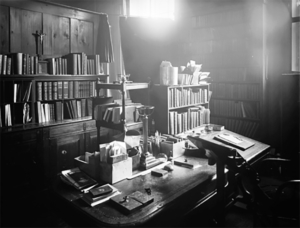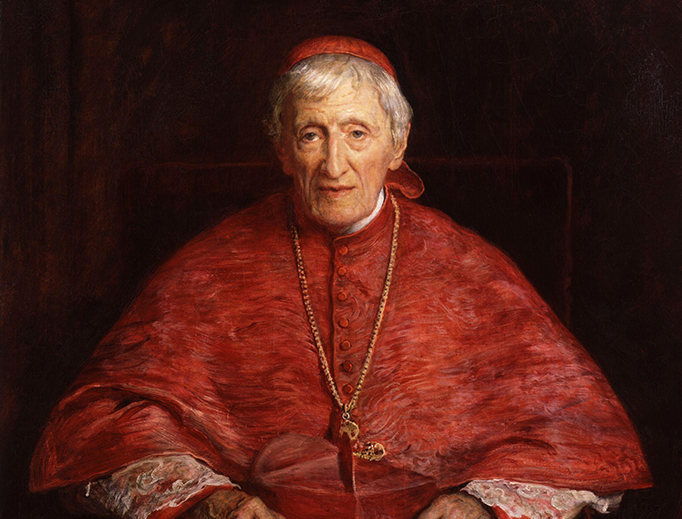In anticipation of the canonization of Bl. John Henry Newman and our presence in Rome for that event, Dr. Robert Moynihan wrote the following Editorial in the latest issue of Inside the Vatican magazine:
Peter, Paul, Newman and Rome
Our friend and occasional fellow pilgrim leader, Kevin Turley, has written a series of articles on Bl. John Henry Newman; about the Year Without Sun (1816) that had a profound interior impact on the young Newman that lead to his conversion and the ‘Second Spring’ of England; the importance of this canonization for Catholic England and the story of the Miracle that paved the way for his canonization. Links to his articles can be found here (or on his Team Page): Frankenstein, Newman and the Year Without Sun; British Celebrate Soon-t0-Be St. John Henry Newman “Gifted Teacher of the Truth”; and Calling on Cardinal Newman, Mother’s Miracle Paves Way for Canonization.
My favorite story told by our friend is that of entering the “Dying Room”, the office of Bl. John Henry Newman, that feels, even after all these years, that he has just stepped out momentarily, soon to return to resume an engaging conversation. It is set forth here, at length, for your reading pleasure:
 A Glimpse Inside Newman’s “Dying Room”
A Glimpse Inside Newman’s “Dying Room”
These rooms preserve Bl. John Henry Newman’s memory as a man as rational as he was holy.
To stand in the room of a saint is quite something. Such was my privilege the other day when the door to the room of John Henry Newman was unlocked and I was bid enter.
There, before me, was the desk at which Blessed John Henry had written letters, sermons and books, all of which are still pored over by scholars today, and no doubt shall be in the years and decades to come. There were his books and his papers; upon the walls his pictures, mostly religious, and, pasted on a wooden cupboard, there was still the trace of a Victorian newspaper. Newman was wont to decorate his cabinet doors with cuttings from newspapers and journals.
There was something else though.
The room is partitioned. Behind the thin wall that separates the two parts of the room there stands an altar. Upon it, there is the Crucifix and candles yet that Newman used when he offered Mass there. On the wall above the altar there also hangs a portrait of St. Francis de Sales, the French spiritual father of this most English of Englishmen. To the left, there is a built-in cupboard holding vestments. They all still hang there: green, red, white, rose, black. It is as if they are about to be lifted out and worn once more. It is as if, at any moment, a footstep will be heard, and before our eyes will come the man who lived and worked in this room: Provost of the Birmingham Oratory, Prince of the Church, but above all, a priest of God offering the Holy Sacrifice each day to the Glory of God and for forgiveness of sins. More than 100 years later, the room retains something of the air of the sanctity of its former occupant. No one else has lived or worked here since Newman, and no one else ever shall. It stands still as if John Henry Newman has just stepped out for a moment, and is due back very soon. Perhaps, in a way, that is how a Christian death should feel – a passing, not an ending, before a never-ending reunion.
There is another ‘death’ in this room though. It is the room itself. The Fathers of the Birmingham Oratory call this room of Newman’s “ the Dying Room.”
My guide pointed to the ceiling. In the corner of the room where two external walls join, there were large ominous cracks on display. Recent structural survey reports indicate that these cracks, far from being superficial, are the outward manifestation of serious interior decay. In the vernacular: Newman’s room is crumbling to dust.
Many will have seen Newman’s room, and the equally impressive library, at the Birmingham Oratory. Some may recall how Pope Benedict XVI, on his visit to the United Kingdom in 2010, visited this room and its adjacent library. There are many pictures online recording this occasion when one saintly scholar visited the room of another. One can only imagine what might have passed through the mind of Pope Benedict when he beheld the room of Blessed John Henry still as intact, at least superficially, as in the late 1800s. One can almost visualize Pope and Blessed sitting at the table in the center of the room lost in the enjoyment of discoursing upon weighty theological matters.
But the room is ‘dying.’
And yet everything in it is a Second Class Relic. From the dried ink on the list of preachers marked up by Newman himself upon a sheet on the wall, to the vestments and the pictures, the relics and the Sacred Vessels, all are part of the world of the man who would be declared Blessed.
Unfortunately, the Priests of the Oratory do not have the means to save the room from its the forces of decay. Newman’s room, once freely open to any scholar or pilgrim, is now permanently closed to the public. In fact, unless funds can be found, I may be one of the last to be allowed entry for, as the room continues to decay, the dangers for all concerned, entering and leaving, grow. If the room does remain permanently closed it shall turn this holy place into a ‘sealed tomb.’
The famous library of Newman, also at the Birmingham Oratory, is in need of equal attention. It, too, has major structural problems. It too needs funds that the Oratory does not possess in order to make good the ravages of time.
As I was shown around the library, I was reminded of how much it, too, was a part of Newman’s life. Here he assembled the texts, ancient and modern, in Greek, Latin and in modern languages to aid his researches, to help him craft a theology that is as relevant today, and as needed — perhaps more so — than it was in the 19th century. This Blessed was a saint of the intellect as well as of the heart, a man of ideas as much as of piety, a scholar as much as a priest. When men, whether in the world of science or theology, history or philosophy seemed intent on rejecting God, here was a man who dared to engage his reason so as to understand better his faith. In doing so, Newman created something in the world of ideas that has not only grown in significance since but also seen off many of his then contemporaries and their modish theories.
At the Oratory in Birmingham there is, in a side chapel, a Shrine dedicated to Blessed John Henry Newman. At its center stands a box, which contains his mortal remains. Many pilgrims from across the world come to venerate this holy man. And yet, as I left the room and the library in the private quarters of the Oratory House, I could not but help think that it was in those two rooms, his study and his library, that the real shrine lies to the Blessed.
Nevertheless, I prayed at Newman’s tomb. A strange prayer perhaps, but a prayer nonetheless: let his rooms be preserved and, thereby, with them, his memory as a man as rational as he was holy.
If anyone can help preserve Newman’s Room please contact [email protected]
Join us in Italy in October on one of our scheduled pilgrimages and visit the tombs of Sts. Peter and Paul and other sacred sites in Italy. Extend your stay in Rome and attend the canonization ceremony for Bl. John Henry Newman or join us next year as we follow “In the Footsteps of St. Thomas More and Bl. John Henry Newman” through England. What an exciting time to take a pause and disconnect from our busy lives to seek a metanoia – a change of heart – and allow the lives of these men of faith to be path markers on our journey to Christ.
Click on the following to view the specific details of the pilgrimages mentioned above:
Classic: The Greatest Holy Presences, Celebrating 25 Years of Inside the Vatican Magazine, October 4 – 12, 2019
Classic: Women Saints Through the Centuries with Barbara Heil, October 14 – 21, 2019
Signature: In The Footsteps of St. Thomas More and Bl. John Henry Newman, June 25 – 23, 2020









Leave A Comment
You must be logged in to post a comment.